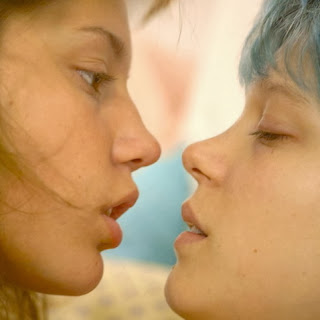Originally published in The Daily Nebraskan, 12/6/2013
“I’ve seen the best minds of my generation destroyed by madness, starving hysterical naked …”
So go the opening lines of Allen Ginsberg’s “Howl,” and madness is a part of what John Krokidas explores in his film, “Kill Your Darlings.” The film takes its title from a William Faulkner quote: “In writing, you must kill all your darlings.”
What he means is that as a writer, one should be careful not to overuse personal meanings, lest you alienate your reader. In the film, a young Ginsberg, played by Daniel Radcliffe, receives this advice from his English professor.
The film casts light on an under-explored chapter in the lives of the Beat poets Jack Kerouac, played by Jack Huston, William S. Burroughs, played by Ben Foster, and Ginsberg, who all met while attending Columbia University in 1944. After being accepted to the university, Ginsberg meets Lucien Carr, played by Dane DeHaan, whose intelligence and charm earn Ginsberg’s admiration.
Enlivened by one another and frustrated with rigid academic tradition, they vow to begin a new literary movement, which they dub “The New Vision.” They rendezvous with the infamous Burroughs, who introduces them to the possibilities of better writing through stimulants. There’s a fantastic scene where Ginsberg, Carr and Burroughs spend the night in a colleague’s study, taking drugs and cutting up literary classics to create new meanings and sentences. When the colleague finally walks in, Burroughs croaks, “Someone get this man a pair of scissors!”
“Kill Your Darlings” wants to wander through its historical setting rather than keep with a straight plot line. This is an issue with many films based on true events, but this one manages to keep it together. The movie’s appeal may be limited to those who are familiar with the Beat generation, but it may offer an interesting attraction for members of the gay community. It’s a rare film where the gay characters are not defined by the fact that they are gay. It also features Radcliffe in a brief but daring gay sex scene, a far cry from his Harry Potter days.
 The real story, however, is the murder that bonds these men for the
years to come. One of the first images in the film is of the body being
disposed of, but those not familiar with this true story do not yet know who has been killed. Once we do
learn his identity, the title of the movie takes on a grim subtext.
The real story, however, is the murder that bonds these men for the
years to come. One of the first images in the film is of the body being
disposed of, but those not familiar with this true story do not yet know who has been killed. Once we do
learn his identity, the title of the movie takes on a grim subtext.The movie is full of strong performances from Radcliffe, DeHaan and Foster. Foster makes an excellent turn as Burroughs, the frog-voiced junkie queer criminal poet, and DeHaan is great as Carr, who displays sophistication and cunning on the surface while angst and torment smolder underneath.
The main attraction for college-age moviegoers will probably be to see what Radcliffe is up to in a post-Potter world. It’s very clear in “Kill Your Darlings” that Radcliffe is an actor with range, and one hopes that he will continue to take on similar interesting roles in order to stay relevant after the end of the massive franchise.
On the whole, “Kill Your Darlings” is a competent study of real-life characters that takes equal turns into romance and tragedy. It’s a good film for those who are interested, but some viewers will be turned off by the prevalent sex and drugs. Regardless, it’s a worthy film about a morose, disenchanted group of men and what they all meant to each other.









